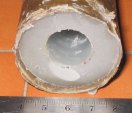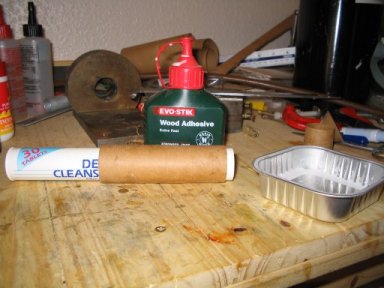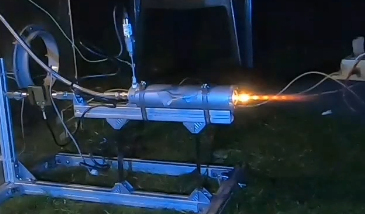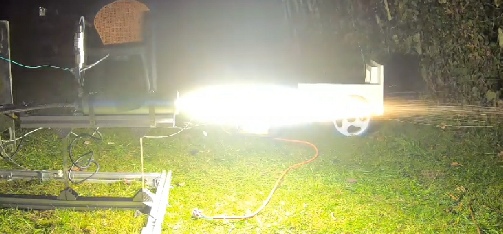

Aspirespace Rocket Engineering Society
Wax hybrids
Experiments by Arif and the gang at Stanford University in the USA showed that hybrid fuel grains made from specific blends of candle-wax could work very well. The advantages of candle wax are simplicity of moulding the grain using traditional candlemaking techniques, and also a much higher regression rate (see our 'Introduction to hybrid design' paper in our Technical Papers).
Aspirespace have joined the growing band of rocketeers trying to emulate Stanford's successes.
Firstly we contacted rocketeer and candlemaker Stuart Liddell for advice on moulding the fuel grains: after some experimentation, we discovered that the use of a porous cardboard liner allowed the wax to flow into the cardboard. This anchored the wax to the card, and prevented it shrinking radially as it cooled.


We discovered that using a highly heat-conductive copper tube as the central mandrel prevented the port from increasing in radius as the wax shrank upon cooling. Removing this metal tube just as the wax was setting produced a smooth central port.
We then modified our H0 engine to use wax grains. Unfortunately, the results of our firings were less than encouraging. The majority of them just caused unburnt melted wax to spew out of the nozzle like water from a firehose!
We had more success when we anchored the wax inside plastic sponge material: pure wax needs mechanical support when it gets hot and soggy.
Still, we were getting nowhere until our talented new member Lucas independently came up with the logical modern alternative: encase the wax within a 3D-printed porous structure!
Not only does this allow the fast production of grains with any desired porosity, but he’s not restricted himself to boring old straight cylindrical ports.
Our excellent team of engineers manufactured a rugged new test-stand, replete with load-cell and high-rate data transfer. The oxidiser was gaseous oxygen controlled by a sonic choke and regulator.
Good quality data was obtained even on the first two ‘shakedown’ firings, showing that the regression rate of these new fuel grains is simply enormous compared to pure plastic with a traditional port geometry.
More firings to come shortly! Here are pics of the first two tests:







